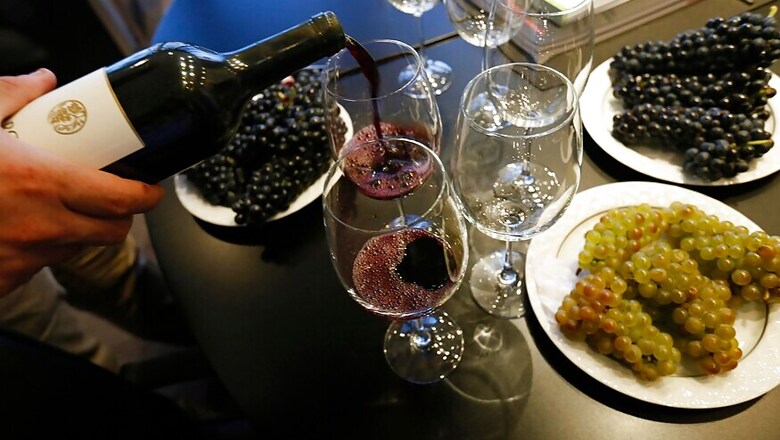
views
 So many people guzzle down alcohol without ever wanting to know what they drink. Could be why there are so many drunkards in the streets. If you stop and ask when your drink was first made, what goes into it, and in what heavenly combination, you’d be spending more time nursing a drink rather than finishing it off!
So many people guzzle down alcohol without ever wanting to know what they drink. Could be why there are so many drunkards in the streets. If you stop and ask when your drink was first made, what goes into it, and in what heavenly combination, you’d be spending more time nursing a drink rather than finishing it off!
Literature and myth slow you down.
Let’s start from the moment some grape first matured in a vine. What could have happened to it? It ripened slowly, one day turning so plump that any moment it would burst with all its sweetness. A fly who flew by spotted the deep red bulb, settled on it and dusted a few yeast cells stuck on its legs.
The yeast, a living creature, a microscopic fungus found abundantly in nature is the real superstar in the world of alcohol. Imagine. Without them, the world would be quite uninhabitable with only fruit juices, milk and water to drink.
Well, so the yeast cell, once landed on the sugary globe, now dug deep into the grape to eat the sugar inside. News spreads and more yeast cells came to the vine for the feast. There were plenty of grapes ripe for all of them.
Yeast has a habit. It eats sugar and poops a funny liquid – alcohol and a little gas. Carbon dioxide.
After the Midas touch of the yeast cell, all those grapes now began to ferment in the sun, turning its sugary juice into mild alcohol. A few days later, a bird came in search of food, knocked back a purple bunch from the vine in one scoop of its beak, down its fluty throat.
The bird felt unusually happy. It could do many impossible things before its newly-courted mate – stunt cartwheeling in the air, somersaulting and precision landing. It spread its plumage to yet-unscaled dimensions and stole a look at his girl, er...bird. It even startled a wild boar that day.
The she-bird was impressed.
The bird went again and again to the funny grape fruits to charge itself. But he could not contain his secret long from its friends with that loud bragging. More birds followed. The air reverberated with stunts and gymnastics for many days in the forest.
And the ancient man saw this. What could have given such energy to these little creatures!
He followed the birds and tasted the grape. The ancient man felt good, talked a lot, sang, beat his wife and slept like a swine. Waking up from the euphoria, he thought it would be good if he could find ways to harness the grape to create a steady supply of the liquid at home.
Well, that explains the prehistoric jug excavated from Iran some 5,400 years ago which speaks volumes about the ancient man and his passion for fermented grapes – wine.
Remember, any alcohol that you drink has been made by yeast cells feeding on sugar of a base product. They eat grape juice and make wine; chew into barley to make beer; chomp down sugarcane to produce rum.
But the science of fermentation was still unknown to the poor people for long, so the magical ability of yeast to convert a barrel of grapes into wine was considered divine. The monks who were in the business had a name for yeast which means ‘God is good.’ That justified their otherwise-questionable work in the vineyard.
But then Louis Pasteur, that party-pooper of a scientist came in and spoiled the fun - he explained the process scientifically.
How many of you know that the quality of yeast determines the quality of dung, (I mean, alcohol) it expels?
There are more than 3,000 varieties of yeast and each one is different from another giving a distinctive taste to the brew. So brewers carefully guard the one they have been breeding for centuries to produce their unique drink. That unicellular fungus is the lynchpin behind the multi-million dollar business they run.
Now they know the process, but still they want the old myths intact. The God connection. That’s why you see them on labels singing paeans on the pious monks who made them in wine in the middle ages.
Yeast. God is Good!
(Next week - Distillation)
(Manu Remakant is a freelance writer who also runs a video blog - A Cup of Kavitha - introducing world poetry to Malayalees. Views expressed here are personal)

















Comments
0 comment